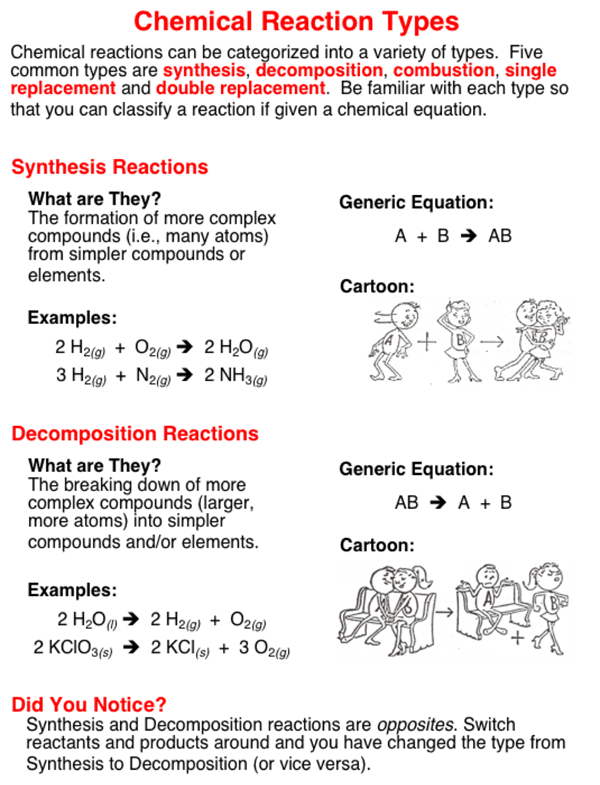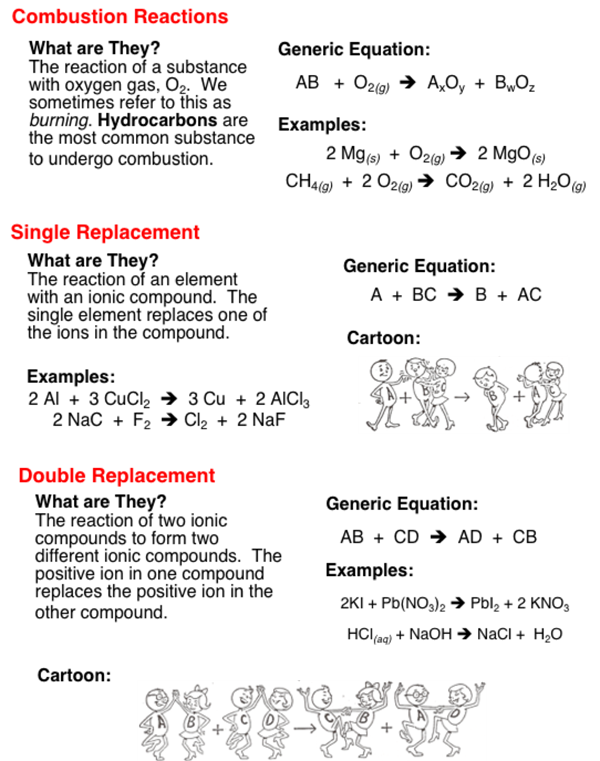Chemical reactions involve changes - changes of reactants into products. Basic chemical reactions can be grouped into categories based on the types of changes that are occuring during the reaction. There are five basic categories - synthesis, decomposition, combustion, single replacement, and double replacement.
Chemical Reaction Types - Questions 7 Help
There is only one question in this Question Group. But each time the question appears, the ordering of answers is scrambled. Here is the question.
The Question:
Which one these statements describes how to typically tell the difference between a single replacement (SR) reaction and a double replacement (DR) reaction?
An SR reaction involves the reaction of an element with a compound and a DR reaction involves the reaction of two compounds.
An SR reaction involves the reaction of an element with a compound and a DR reaction involves the reaction of two elements.
An SR reaction involves the reaction of two elements and a DR reaction involves the reaction of two compounds.
A DR reaction is twice as long as an SR reaction.

